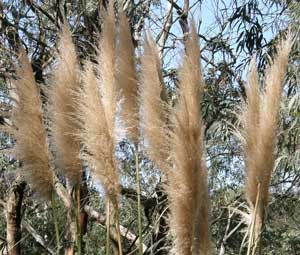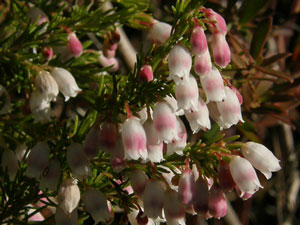There's 403 exotic (introduced) flora species in the reserves of the GBMWHA. 55 of these are Priority Weeds in the Blue Mountains LGA and 17 are Weeds of National Significance.
Here's the list of the GBMWHA exotic flora species.
some background
The Biosecurity Act 2015 places restrictions on plants that harm the environment, economy and community. Those plants are called "priority weeds" - replacing the term “noxious weeds”.Priority weeds fall into three categories - state, regional and local - and it specifies the control measures that apply.
- state priority weeds apply to the whole of NSW;
- regional priority weeds apply to the Local Land Services region;
- local priority weeds apply to the local government area.
The GBMWHA is in four local land service regions - Greater Sydney, Hunter, Central Tablelands and South East.
It is also in ten local government areas - Blue Mountains, Cessnock, Hawkesbury, Lithgow City, Mid-Western Regional, Muswellbrook, Oberon, Singleton, Wingecarribee, Wollondilly.
The Blue Mountains is in the Greater Sydney Local Land Services region and the Blue Mountains LGA. This is the respective "regional" and "local" priority weeds used in my analysis.
the weeds
Notes:
- This list was derived by selecting the GBMWHA reserves on PlantNET and BioNet. Selecting "introduced species" for the Blue Mountains LGA on PlantNet produces a similar number of species.
- A list of weeds is by its very nature variable, in that weeds can be invasive and eradication processes are ongoing.
The Blue Mountains City Council has produced an informative booklet on local priority weeds (8MB).
The Blue Mountains has a proud history of bushcare - here's more information and how to get involved.
The more well known local priority weeds are -
- Black Willow (Salix nigra)
- Weeping Willow (Salix babylonica)
- Blackberry (Rubus fruticosus sp. agg.)
- English Broom (Cytisus scoparius subsp. scoparius)
- Gorse (Ulex europaeus)
- Lantana (Lantana camara)
- Large-leaved Privet (Ligustrum lucidum)
- Montbretia (Crocosmia crocosmiiflora)
- Montpellier Broom (Genista monspessulana)
- Patterson's Curse (Echium plantagineum)
- Small-leaved Privet (Ligustrum sinense).



